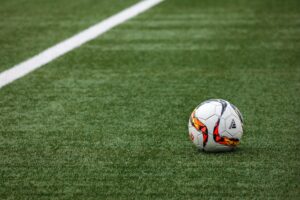 Midwest Grows Green’s Ryan Anderson explains why our Chicago Ultimate Frisbee Tournament fundraiser will always take place on natural turfgrass, not artificial turf.
Midwest Grows Green’s Ryan Anderson explains why our Chicago Ultimate Frisbee Tournament fundraiser will always take place on natural turfgrass, not artificial turf.
Midwest Grows Green’s annual ultimate frisbee tournament fundraiser takes place June 11-12. This tourney and all future tourneys will take place on naturally grown turfgrass, not artificial turf.
We see between 1,200 to 1,500 new synthetic turf field installations each year in the U.S. Artificial turf producers market their products as lower maintenance, more cost-effective, safer and more sustainable compared to naturally managed turfgrass. Last month, I joined The Mike Nowak Show to discuss the research and real-world examples that questions the logic of all four claims:
-
- Low-maintenance: Turf lacks soil biology that usually inhibits pathogens such as MRSA. A “safely managed” artificial turf field will spend thousands of dollars each year on disinfectant or biocide treatments to limit the risk of MRSA and other disease transmission. Field managers may, also, need to replenish the field infill of crumb rubber, virgin rubber and/or coated sand, since these products do not regenerate like natural grass field soil.
- Cost-effective: An artificial turf field installation costs $800,000 at the low-end compared to $50,000 for natural turfgrass on native soil and $250,000 for natural turfgrass on sand-based fields. This NYT article covers all the cost considerations that go into installing a field. We seriously need to consider if artificial turf fields are more cost-effective than natural grass fields considering the annual maintenance needed, infill replacements and the need to replace the field after 10 years.
- Safe: Artificial turf fields pose multiple player safety and human health concerns despite the flat surface and avoidance of herbicide and pesticide applications. The National Football League Players Association (NFLPA) and hundreds of NFL players have petitioned the league to switch to natural grass after a string of non-contact injuries took place on artificial turf.Athletics can’t use the fields many times in the summer due to heat exhaustion and dehydration risks. One study found that artificial turf’s surface temperature was 37 degrees higher than asphalt and 86.5 degrees higher than natural turf.
Testing of chemicals in some artificial turf brands have detected presence of the forever chemical PFAS linked to multiple health problems including cancer. Some studies reported health risks associated with the biocides and disinfectants used to maintain the fields. Finally, these fields frequently use rubber infill that includes a mixture of carcinogens, metals and petroleum products.
- Sustainable: Producing the rubber or plastic-coated infill and the plastic turf blades for an artificial turf field releases a lot of carbon to the atmosphere. One 2017 study estimated that the construction, maintenance and final removal of an artificial turf field released 527 tons of carbon dioxide equivalents or the same amount of emissions as driving 123 gasoline-powered cars for one year.In addition, artificial turf fields contribute to the heat island effect, end up in the landfill and can contribute to water quality issues. This factsheet provides a brief overview of these environmental impacts.
While we see downsides to natural grass fields, particularly those managed with synthetic fertilizers and pesticides, we believe artificial turf environmental and human health risks far outweigh natural grass risks.
Every annual Chicago Ultimate Frisbee Tournament and future MGG event will occur on natural grass. We hope to see more natural grass fields managed without synthetic pesticides or fertilizers available for similar large sporting events. If you want to support our vision to make all greenspaces in the Midwest organic by 2030, please consider making a tax-deductible donation to MGG at bit.ly/MGGdonation. Thank you!
